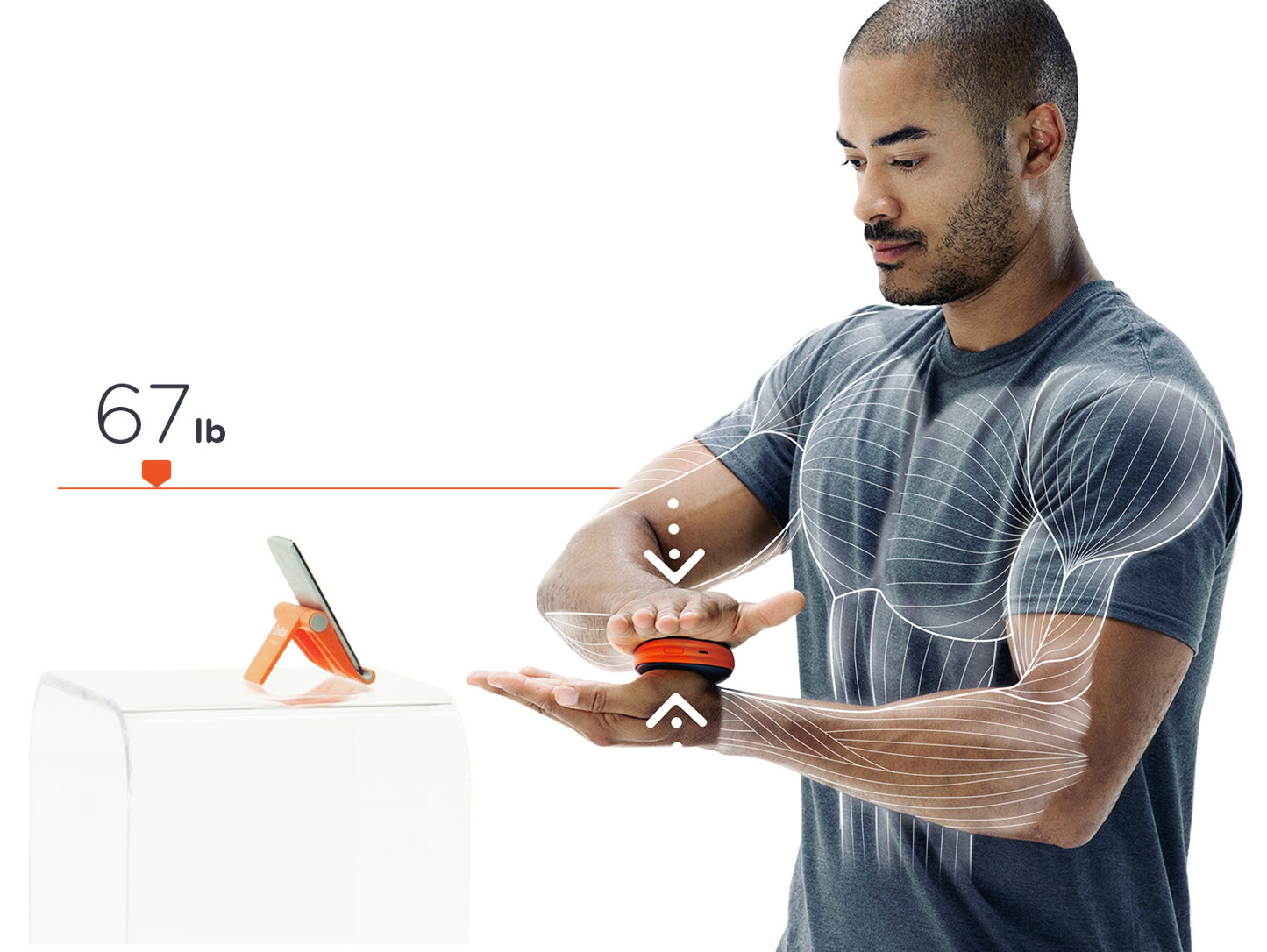
Activ5 utilizes isometrics to act as a highly effective and versatile addition to any strength-training or exercise regimen. To really understand how Activ5 works, it’s helpful to review the foundational science behind muscle activity.
Three Types of Muscle Contractions
The human body is capable of three essential types of muscle contractions – concentric, eccentric and isometric. Concentric contractions occur when a muscle is activated and required to lift a load that is less than the tetanic tension it can generate. As a result, the muscle begins to shorten, and 100$ of muscle fibers are activated. Lifting a dumbbell when doing a bicep curl is a classic example of a concentric contraction.
Eccentric contractions, on the other hand, occur as a muscle is lengthening, and only around 40% of muscle fibers are activated. Lowering a dumbbell during a curl is an example of an eccentric contraction. Because eccentric contractions break down muscle cells, actions that lengthen muscles help enable hypertrophy, the increase in muscle size that many weightlifters crave.
Isometric contractions occur when a muscle is activated, but instead of shortening as in concentric contractions or lengthening as in eccentric contractions, the muscle is held at a constant length. A plank is an example of an isometric exercise, as are many yoga poses.
Overcoming and Yielding Isometrics
Isometric exercises work in two different ways. The first, called “overcoming isometrics”, occurs when you attempt to lift a unit of weight that is beyond your capacity – essentially attempting to move an immovable object with maximum effort. Overcoming isometrics allow you to recruit as many motor units and muscle fibers as possible, “turning on” the muscle for a temporary boost in strength. Overcoming isometrics are often used as part of what strength trainers call “contrast training” in order to improve muscle power.
The second kind of isometric exercise is called “yielding isometrics”, which involves maintaining a static hold in a certain position for a given period of time. Yielding isometrics can be used to help isolate specific muscles to improve muscle mass, either to strengthen a healthy muscle and ensure symmetry or as a physical therapy technique to build up recovering muscles after an injury.
Activ5 uses yielding isometrics to produce measurable results that can help transform your fitness regimen. Check out the following exercises for great examples of yielding isometrics at work:
Plank Crush

Begin on your elbows and knees. Place Activ5 underneath both palms. Straighten your legs, keeping them hip-width apart. Keep your back straight. Your body should form a straight line from your shoulders to your feet. Press Activ5 as you squeeze your core muscles.
Bicep Curl (L/R)

Hold Activ5 with your left palm. Lean forward at the waist and place your left elbow on the inside of your left knee. Place your right palm on top of Activ5 and squeeze. Keep both elbows bent at 90 degrees. Repeat on the other side.
French Triceps Press (L/R)

Bend and lift your left elbow to eye level. Make a fist with your left hand. Place Activ5 on the bottom of your left fist with your right palm. Press Activ5 with your left fist and right palm as you squeeze your shoulder muscles.
